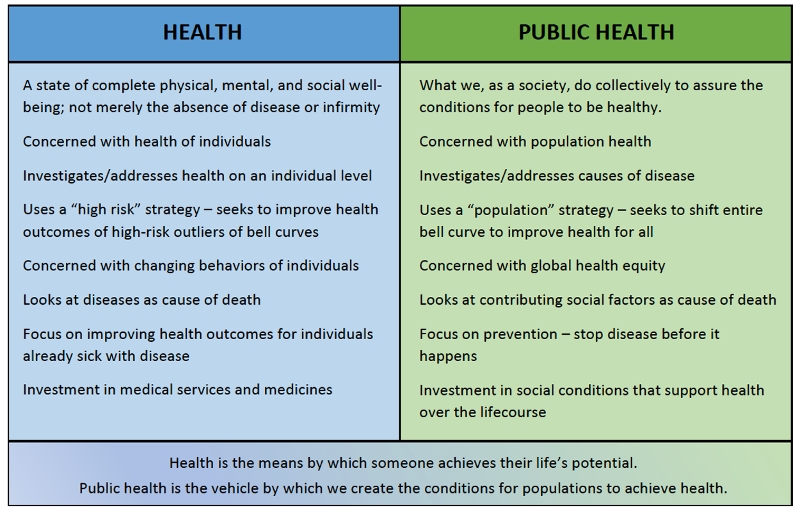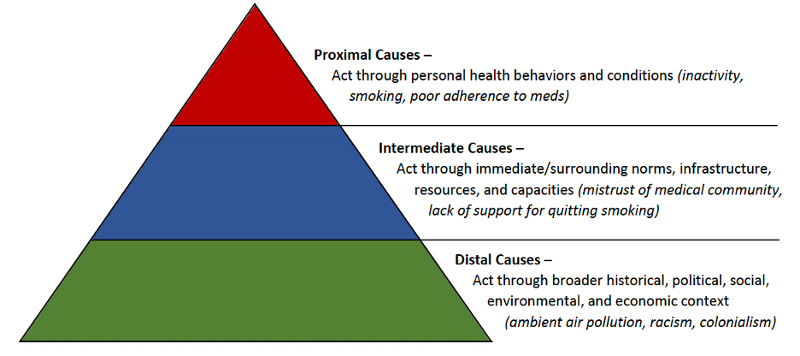5. Individual, Community, and Population Health
How would you define health and public health?
Re-read the definitions of health and public health that were provided at the beginning of this training:
The World Health Organization (WHO) defines health as:
"...a state of complete physical, mental, and social well-being; not merely the absence of disease or infirmity."
The Institute of Medicine (IOM) defines public health as:
"...what we, as a society do collectively to assure the conditions for people to be healthy."
After having learned about the role and goals of public health from all of the recordings in this training, would you agree with these definitions? How you would change or build upon them?
After completing this section, you will be able to:
- Contrast the definitions of health and public health
- Describe the five steps of the public health approach to addressing problems
- Identify fundamental causes of disease
- Give examples of interventions for each of the five levels of the social ecological model
Recording 5A
Listen to this recording (approximately 5 minutes).
Action Item
Review this image that illustrates the difference between health and public health. Be sure you are able to articulate the difference, since public health is often misunderstood.

Recording 5B
Listen to this recording (approximately 12 minutes).
Action Item
Complete this tabbed activity that summarizes the five steps of the public health approach to addressing problems.
Identify and define the health problem
You must undertand the:
- who
- what
- when
- where
- how
associated with the problem
Identify the risk factors (determinants and detractors)
It is not enough to just know the magnitude of the problem. You must also understand the factors that protect people and those that put them at risk for experiencing or perpetrating the problem.
Develop and test interventions to control or prevent the problem
Use data (e.g, research findings, needs assessments, community surveys, stakeholder interviews, focus groups) to design evidence-based approaches.
Implement interventions to improve health
Have an evaluation plan so you can monitor your progress on improving health outcomes.
Assess the effectiveness of the intervention
Evaluate whether your intervention made a difference or not. If it did, share your findings!
Recording 5C
Listen to this recording (approximately 7 minutes + 34 minutes for optional videos).
Action Item
Review this image that defines proximal, intermediate, and distal factors that cause disease.

Recording 5D
Listen to this recording (approximately 16 minutes).
Action Item
Practice
Using one of the two examples Professor Godley listed on the Let's Practice slide, answer these questions:
1. What is the actual health risk?
2. At which level(s) of the social ecological model do you feel interventions are needed?
3. What are your suggested interventions?
4. Which intervention do you think would have the best chance of success? Why?